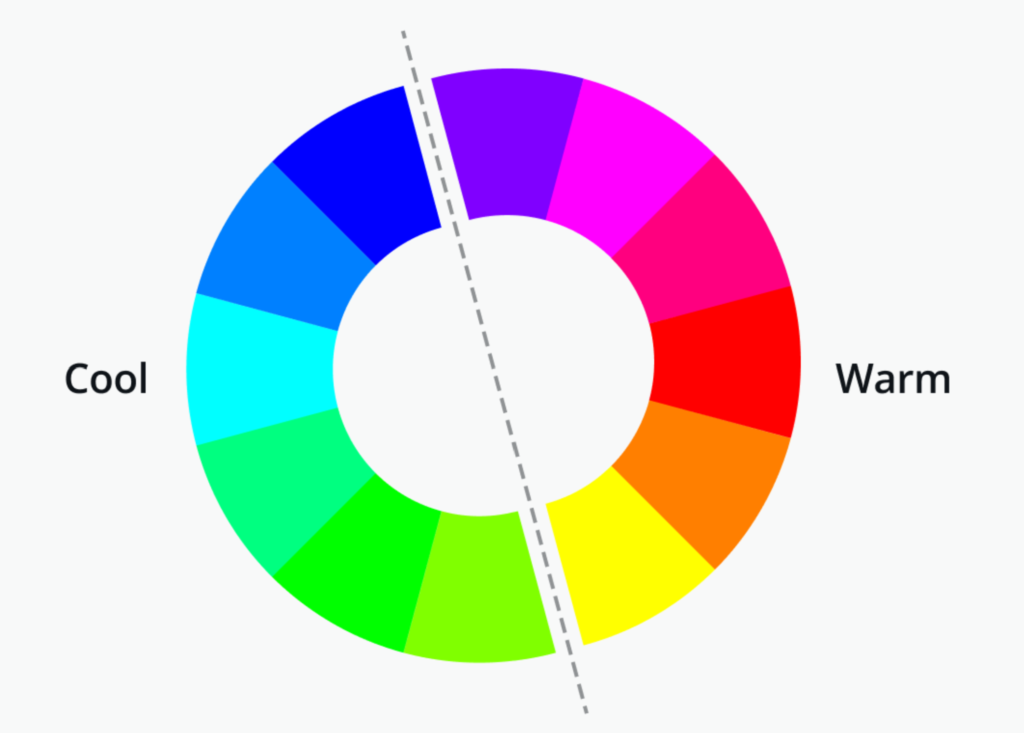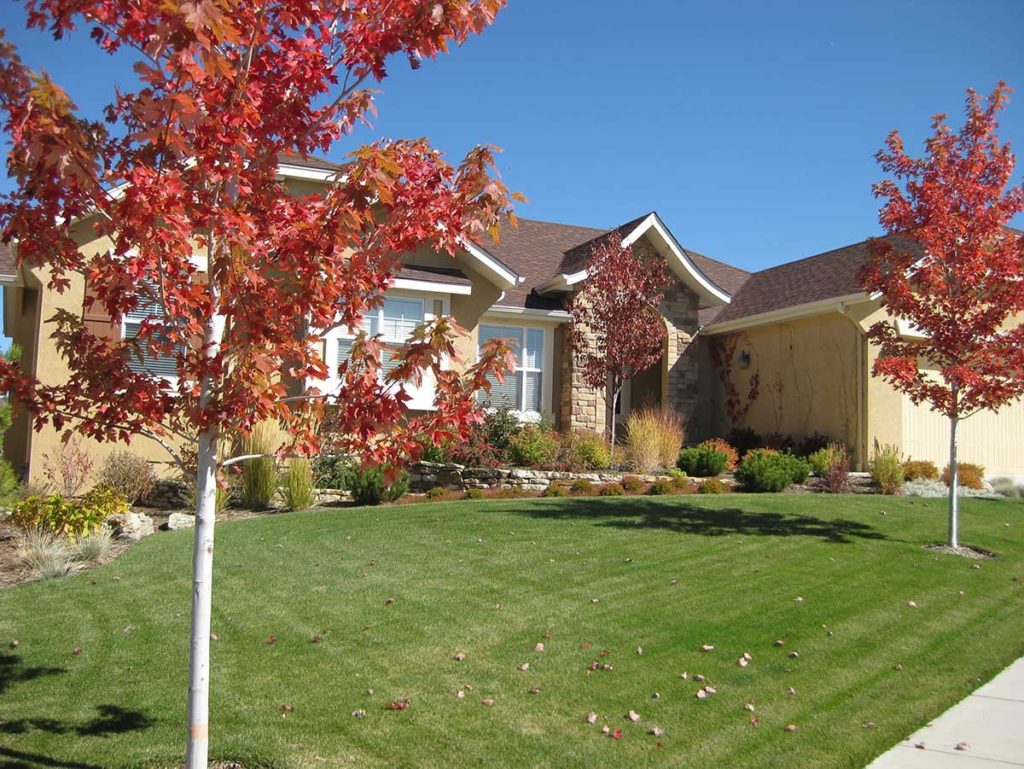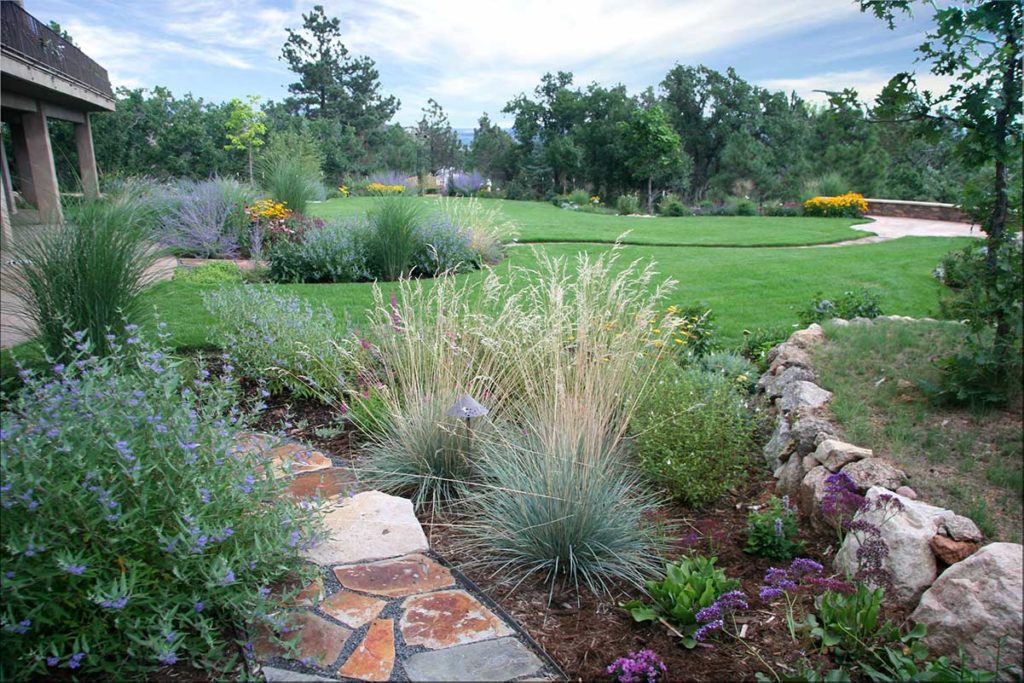Many landscape designers believe that using color in their design is a crucial element of a successful project. Color in the landscape throughout the year is regarded as a celebration of great design, for without it, your landscape may seem uneventful.
Responses to color are very personal - what is cheerful and fascinating to one person can be unappealing to another. Our responses to color are emotional, but even though they vary from one person to another, we have accounted for some general trends.
Using Warm vs Cool Colors
Most of us agree that red, yellow, and orange are 'warm' colors and green, blue, and white are 'cool.' Strong contrasts in your landscape are generally felt to be festive, stimulating, or restless, harmonies more soothing and romantic. It's an inevitable factor in the human difference that some people prefer to be stimulated whereas others want to be relaxed. (Example of Warm Vs. Cool Color Palette)
The colors used in the landscape are also dependent on function. Many use their landscape as a place for relaxation, away from their work-life, and such a person is most likely to prefer a pastel border to vibrant warm tones. Others may want to bring color and inspiration to their landscape, a chance to express their artistic side with a mix of wild color choices. Plant combinations can change perspective and evoke certain emotions.
The color wheel is a great tool to help predict which colors work for you, as it illustrates which colors contrast with each other and which colors harmonize. Find some great ideas of color palettes to use in your landscape.

- The color wheel's inner circle represents the three primary colors and the nine colors made by mixing these primary colors.
- Harmony is created by putting together colors that are adjacent to each other on the wheel.
- Contrast is created by putting together complementary colors - opposite of each other on the wheel.
- The outermost circle of color consists of pastels created by adding white to all colors on the inner circle.
Visiting local gardens and investing in a collection of gardening books may result in a good list of plant combinations. You will find that most landscapes will probably consist of two or three colors that look stunning together and some additional plants that combine well with the core combination. Studying color combinations around town or in your own neighborhood will give you ideas for plants that harmonize well together and lead to successful border plantings.
Planning for Color in the Landscape for all Seasons
When planning your garden beds, imagine how you would like to view your landscape throughout the year. Planning and choosing color combinations for different seasons is important, so you have a good seasonal spread and an appealing garden year-round. Your landscape can start to feel chaotic when several different combinations are planted for the same season. The most successful plantings are planned out in 'drifts,' planting in groups of even numbers 3, 5, or 7 to create consistency.

Harmonic planting is a conservative way of combining color and the most relaxing to the eye, especially in small spaces. Conceptualize colors that are next to or very close to each other on the color wheel. These are colors that are related to each other and do contrast sharply.
Plantings in the landscape can be very visually appealing when comparing and appreciating variations and blends or related colors. Often this is achieved by including several related plants, such as perennials in the white, pink, red-pink, and crimson spectrum, without orange or yellow to destroy the harmony. However, some believe this is restrictive to your color palette and can lead to a certain visual flatness. Contrasting color is needed to create visual interest.

The use of contrasting colors in the landscape can be overwhelming to some designers. No doubt working in contrast involves more skill and time when considering plant material. The effort is well worth it; contrasting plant choices within your garden can create a visually stimulating experience. The mixing of colors can be very cheerful and is an essential part of summer garden design. Many landscape designers are drawn to various colors and do not want to restrict themselves too much.

There is an infinite amount of color combinations that can be explored within your landscape. Choosing the right color scheme is dependent on how you, the homeowner, would like to experience your space. Discovering what you like is the most important when deciding on a color palette. The best way to learn about what colors appeal to you is to start experimenting!